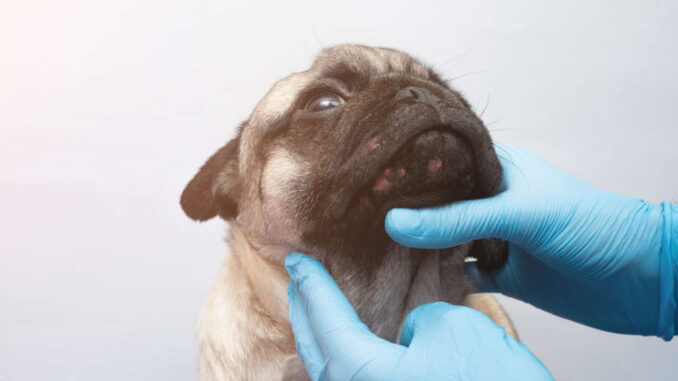
There are so many important structures on dogs’ heads that lumps and bumps here can be especially worrying. But when should you worry and when is it ok just to keep an eye on a lump? In this article we’ll review the common lumps and bumps we see on dogs’ heads in the clinic.
Most common types of lumps that can be found on a dog’s head
1. Head bump called the “Occiput”
Occasionally, my patients are worried by the lumps on their dog’s skull – which can simply be part of the normal dog’s anatomy. These include the sagittal crest and ‘external occipital protuberance’ (occiput), which are prominent in some breeds.
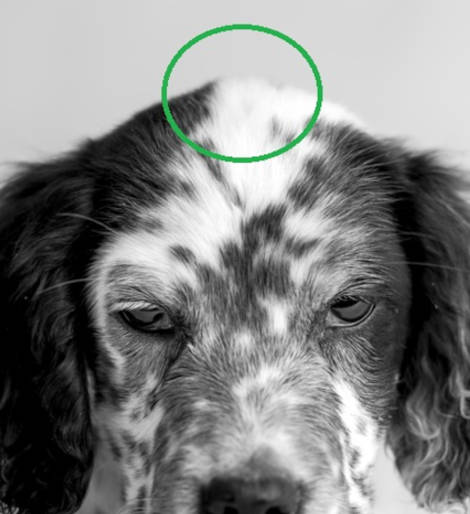
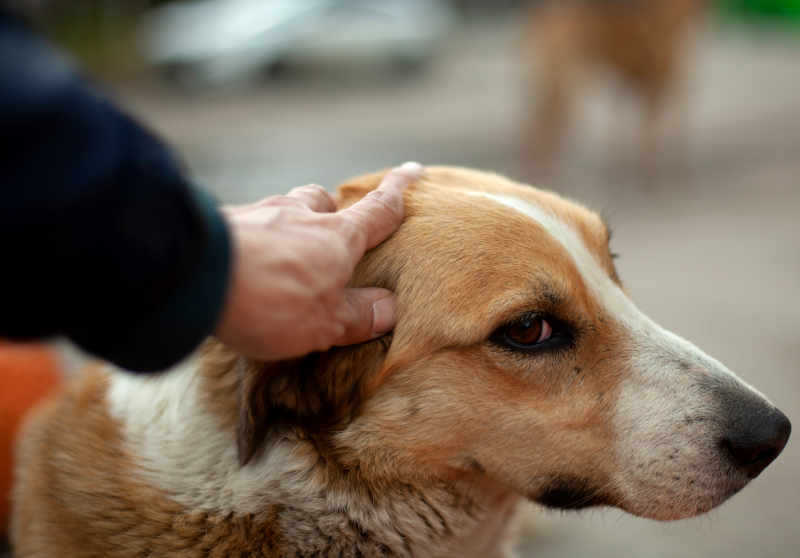
Always check these areas are symmetrical, and if you’re still worried ask your vet to check them for you or read our article: Dog Occiput (FAQ About This Bump On Your Dog’s Head).
2. Cysts
Cysts are common, especially in older dogs, and can often be seen on their heads. Different cysts vary in appearance but they’re usually non-painful, slow growing and either on or within the skin but freely moveable over underlying tissues.
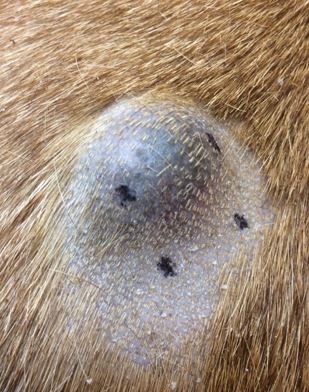
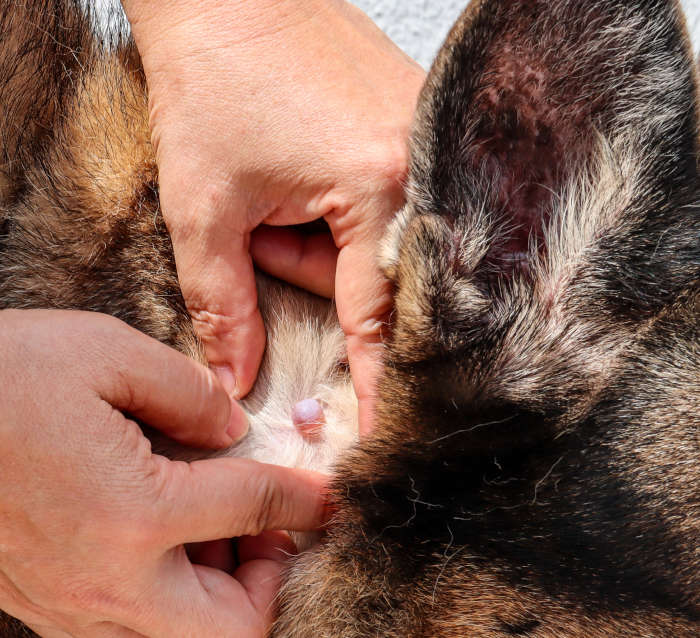

Cysts are filled with fluid or thicker greasy material from glands in the skin. They don’t usually need treatment unless they rupture and cause inflammation; this can be cured by surgery. Read our article about Cysts on a Dog’s Head.
3. Insect bites or stings
In summer we commonly see dogs come in with acute onset, localized puffy swelling due to bites and stings. These are especially common on the face as dogs usually explore things head first! If the swelling is substantial, you’re worried their eyes or airway, or you notice other symptoms it’s worth seeing your vet. Mild reactions usually settle over a few days.
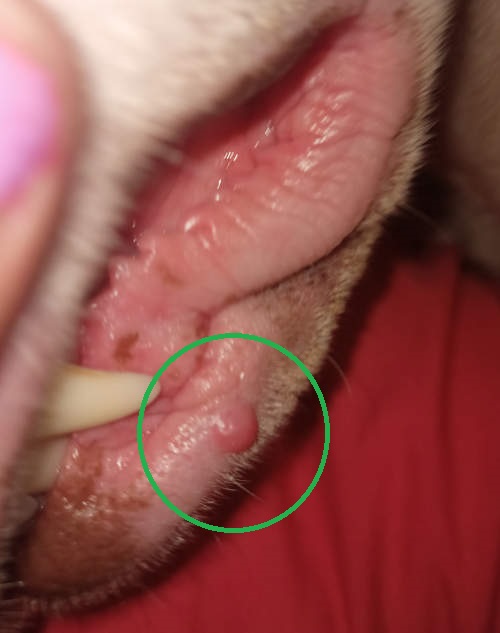
4. Warts or Adenomas
Warts present as small ‘cauliflower like’ lumps on the skin of younger dogs, typically on the face and paws; they’re caused by a virus and usually resolve over several weeks to months.
Pictures of warts on a dog’s face (lips and ear flaps):
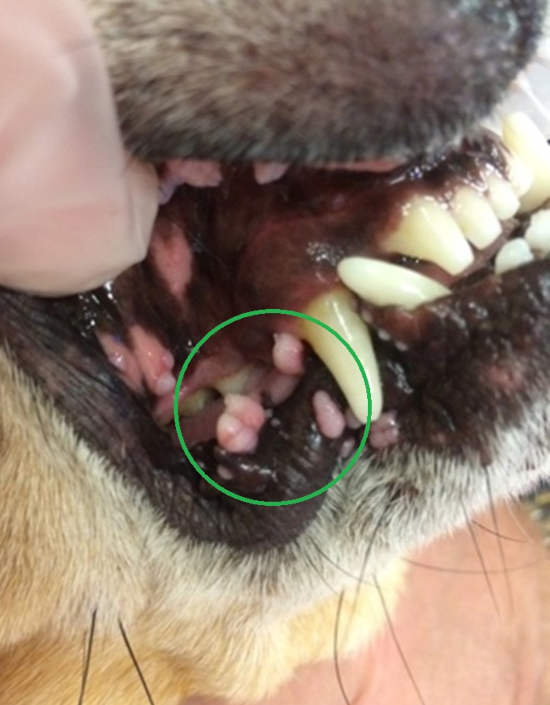
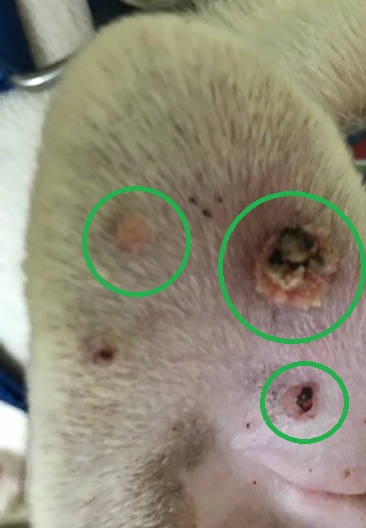
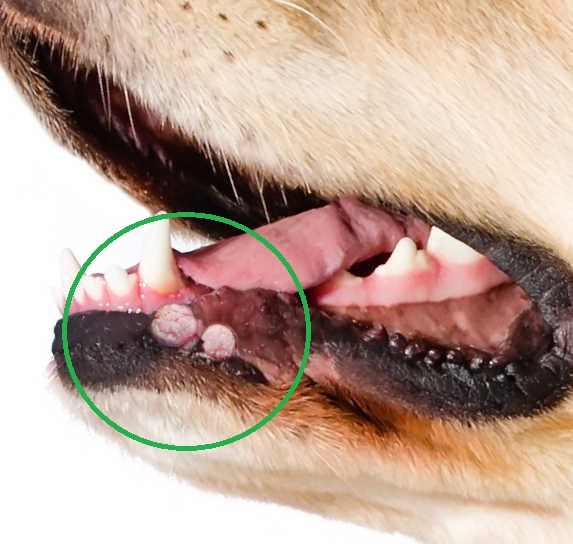
The warts on the picture below are pink, furless, and slightly raised, just above the dog’s nose:
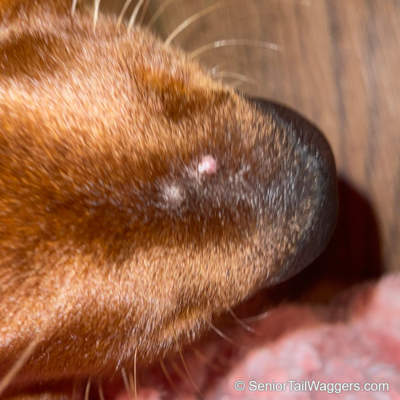
Warts usually manifest as small, rough-textured growths, often with a cauliflower-like appearance. Fortunately, they are generally benign and not a cause for concern. However, as with any lump, it is essential to consult your veterinarian to ensure that the lump is not indicative of a more serious condition. Learn more about Warts (Pictures, Symptoms, Treatments).
5. Cancerous tumors
A range of cancerous tumors can affect the skin of the head, including malignant mast cell tumors (which have a very variable appearance). These are among the most common skin cancers in dogs and can occur anywhere on the body, including the head. They can vary in appearance and are known for their unpredictable behavior.
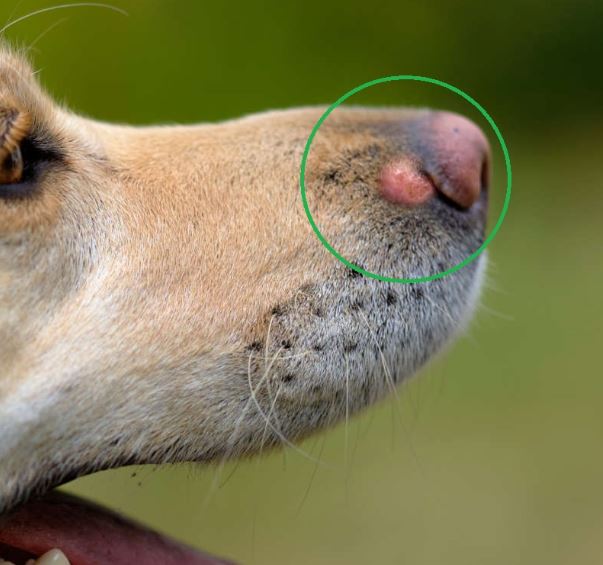
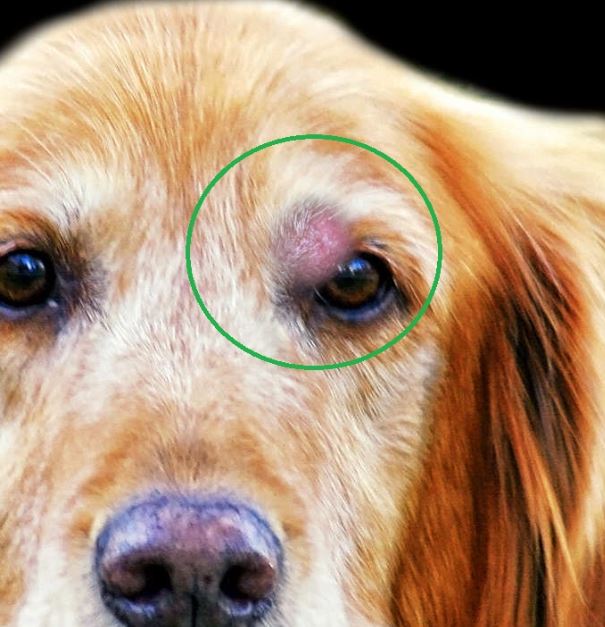
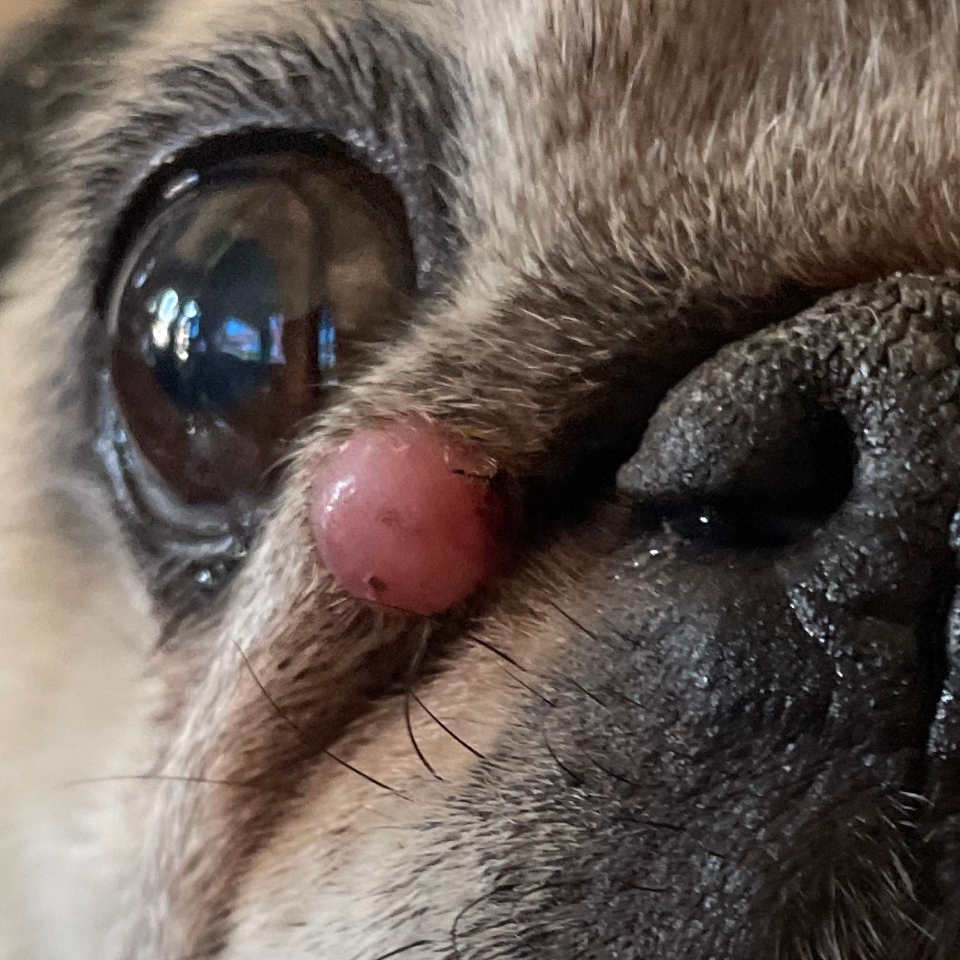
Melanomas can also appear on the head, especially around the mouth (lips and gums). They are aggressive and can be black, brown, or flesh-colored. View more pictures of melanomas.
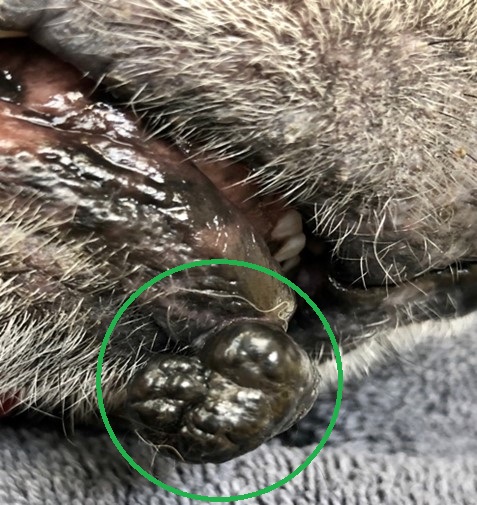
Photos: Ian Spiegel DACVD
The picture below shows a senior dog which has developed a raised, irregular and fleshy growth. Because this mass has grown rapidly, there is an increased risk that the growth could be cancerous:
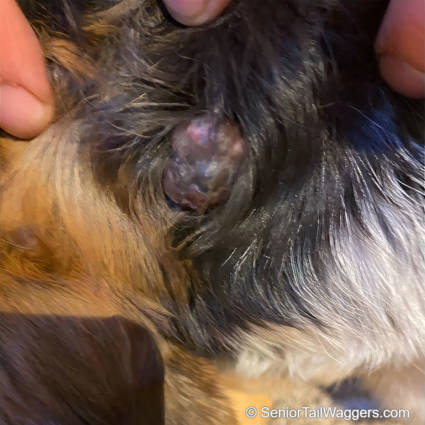
If you notice any new lump that persists for more than a few weeks or seems to be growing, make sure you consult with your veterinarian. They will be able to perform a physical exam and/or perform an FNA or biopsy to confirm the nature of your dog’s lump.
6. Histiocytomas
Histiocytomas are commonly seen on the head, neck, ears and legs in young dogs and appear as aggressive, rapidly growing, red, hairless and often inflamed small lumps; however, this tumor is benign and usually resolves over 2-3 months. Learn more about Histiocytomas (Pictures, Symptoms, Treatments).
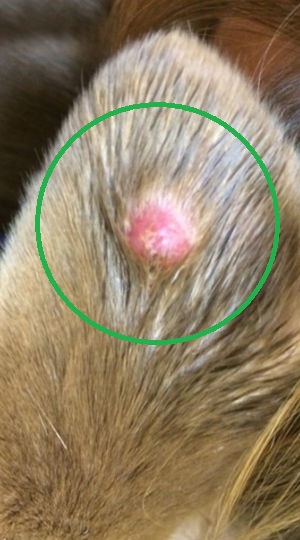
© Ian Spiegel, DACVD
6. Skin tags
Skin tags look like small, soft, flesh-colored flaps of skin that hang off the body. These small growths can be pink, tan or pigmented and grow from the surface of the skin. They’re benign and often accumulate with age. Learn more about Skin Tags (Pictures & Treatments).
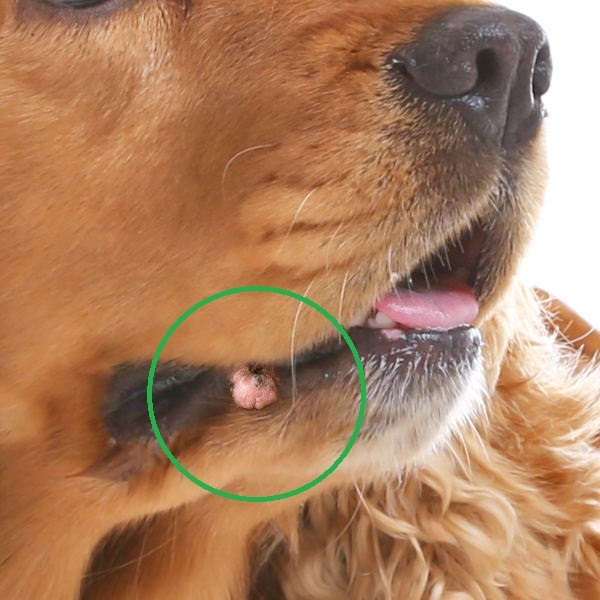
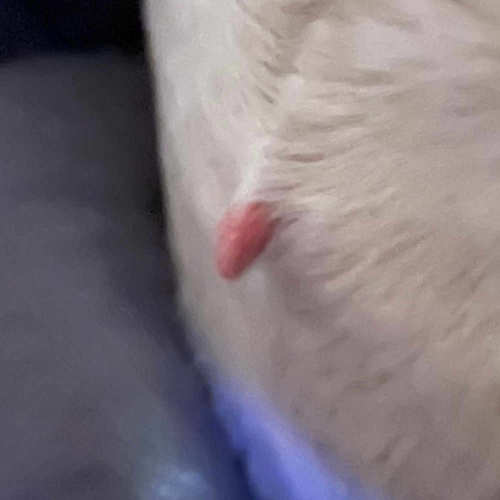
7. Canine acne
Acne in dogs, or canine acne, is a common skin issue that typically appears as small bumps on the chin and lips of dogs, as seen in picture below:
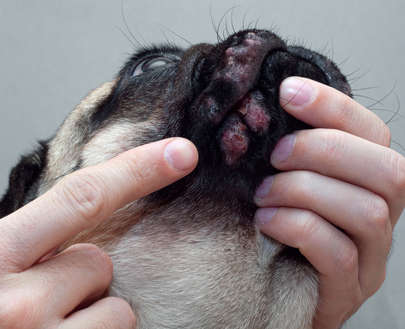
You can suspect your dog has acne on their chin if you notice blackheads, red bumps, swelling, and possibly pus-filled lesions around the chin and lip area.
A mild case of acne may resolve on its own with time and gentle cleaning with mild antibacterial soap and cool water, or cleansers like PetMD Topical Wipes if given the go-ahead by your vet. However, more severe cases will require vet-prescribed antibiotics or antifungals.
Learn more about Dog Acne (Pictures & Treatments).
8. Infections
Abscesses on the head present as painful, swollen ‘lumps’, often secondary to an initial small wound or foreign body. They usually develop over a few days and may ooze discharge.
Dermatitis can also cause an itchy, ‘bumpy’ rash, while an infected ‘hot spot’ may present as a larger bump of dried discharge and thickened skin.
9. Trauma
Trauma can cause bruising and ‘cellulitis’ – inflammation of tissues in and under the skin. This may settle over a few days but if your dog has experienced significant trauma it’s worth getting them checked by your vet, especially if infection may be present.
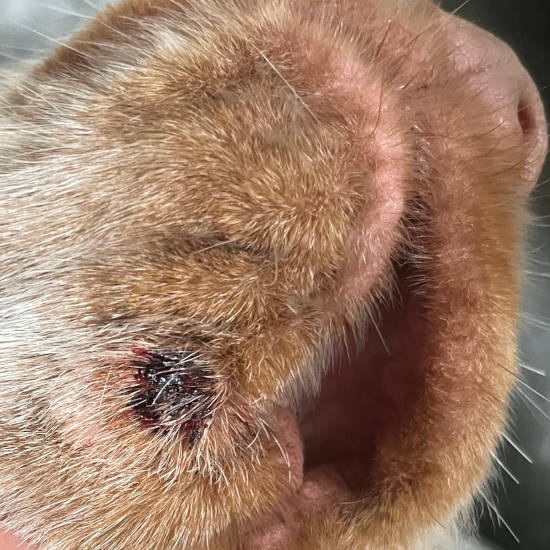
Want to see more pictures?
Read our page about 12 common dog lumps and bumps.
Signs that you need to see your veterinarian
- The lump on your dog’s head persists for more than a few weeks (although warts in young dogs can be monitored for a little longer). In older dogs, lumps should be checked sooner rather than later.
- The lump grows, becomes inflamed, or looks infected. Infections also need treating quickly as they can progress rapidly. An infected lump on a dog appears swollen, red, possibly oozing pus or fluid, and may be warm to the touch.
- The lump looks raised, with an irregular shape or appears black or red. These could be signs that the lump is cancerous, although it is usually not possible to diagnose a lump by just looking at it.
“It’s often not possible to determine the true nature of a lump simply by looking at it. A lump that appears harmless could potentially be cancerous, and vice versa. To obtain an accurate diagnosis and determine the appropriate treatment, a Fine Needle Aspirate or biopsy is necessary to confirm the diagnosis.”
Diagnosis
The vet may be able to make a diagnosis based on a physical exam. Otherwise, they may take a fine needle aspirate (small needle sample) of any lumps to check for cyst contents and to examine cells under a microscope for a more definitive diagnosis; this usually costs $150-$250.
Related posts:
Disclaimer: This website's content is not a substitute for veterinary care. Always consult with your veterinarian for healthcare decisions. Read More.







Be the first to comment